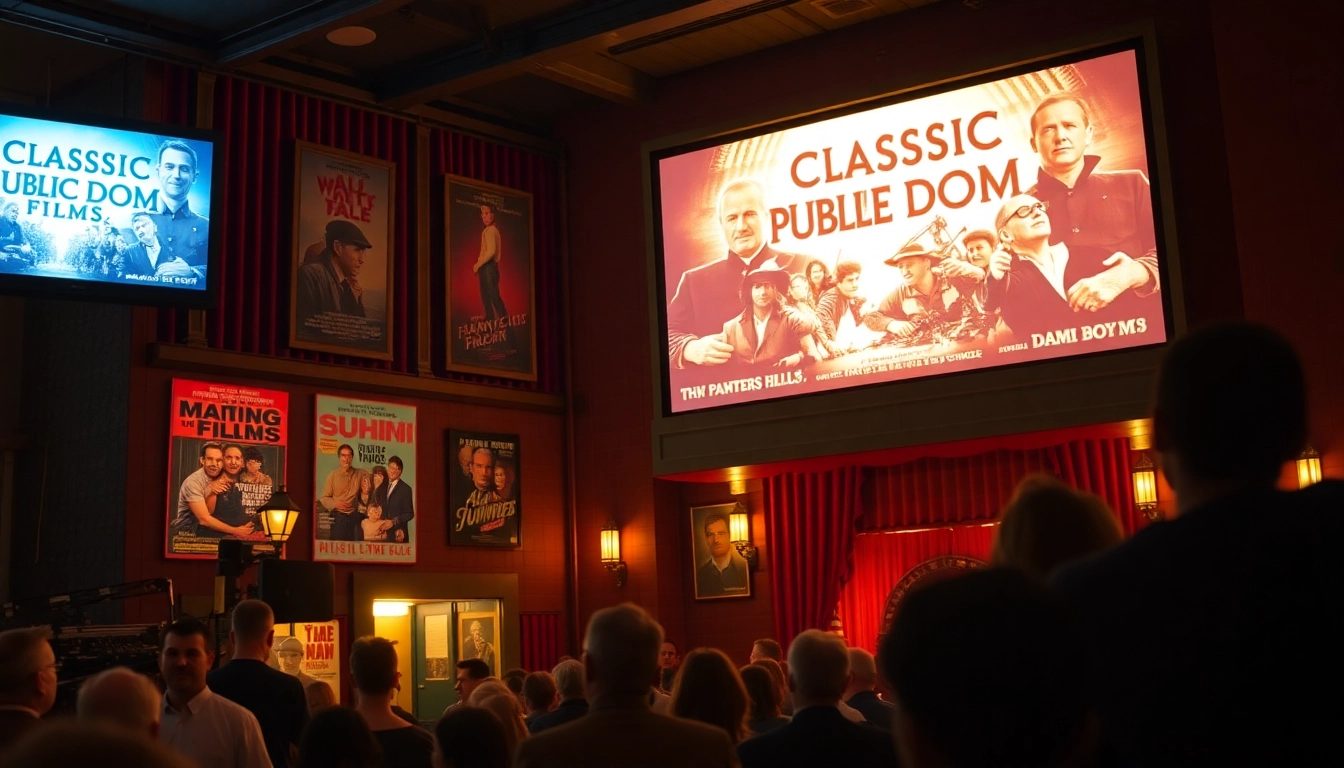Understanding Public Domain Films
What Are Public Domain Films?
A public domain film is a movie that is no longer protected by copyright, meaning it can be freely used, reproduced, and distributed by anyone. The removal from copyright protection can occur for various reasons, such as the expiration of the copyright term, non-renewal of copyright, or the work has been explicitly placed in the public domain by the author. Essentially, public domain films are part of a shared cultural heritage that can be enjoyed without the encumbrance of legal restrictions.
How Films Enter the Public Domain
Films can enter the public domain through several mechanisms. The most common path is simply the expiration of copyright, which varies by country. In the United States, for instance, the copyright on films created after January 1, 1978 lasts for the life of the author plus 70 years. For films made before this date, the rules can get more complicated, factoring in registration and whether or not the copyright was renewed.
Furthermore, films made before 1923 are automatically placed in the public domain, making them freely available. Various factors influence the duration of copyright, including the laws in place at the time of the film’s creation, which can significantly impact when a film enters the public domain.
Historical Context of Public Domain Films
The concept of public domain has evolved as a cornerstone of copyright law, allowing society to benefit from creative works without hindrances. Historically, cinema from the early 20th century represents a rich repository of cultural output, and many notable films have transitioned into the public domain across decades. The shift to digital media has accelerated this phenomenon, making the discovery and usage of historic films more accessible to everyone.
Finding Public Domain Films Online
Top Websites for Public Domain Films
The internet is a treasure trove for discovering public domain films. Several dedicated platforms curate collections of such films, making it easier for viewers and researchers alike. Notable sites include:
- Internet Archive: A comprehensive digital library that offers a vast collection of films, including many in the public domain.
- Public Domain Movies: A specific site dedicated to cataloging films that have entered the public domain.
- Library of Congress: Home to a selection of important films preserved for educational purposes.
- Open Culture: Aggregates cultural and educational media, including public domain films.
Searching for Specific Titles
When searching for specific titles of public domain films, utilizing keywords effectively can help. Websites like IMDb can be useful for confirming a film’s public domain status or discovering related titles. Keeping track of films that fall between copyright terms can also help in anticipating public domain releases.
Utilizing Libraries and Archives
Local libraries and historical archives often have multimedia sections that house public domain films. Many institutions, such as university libraries, have digitized collections of older films that are accessible online or in house. Engaging with libraries is an excellent way to access lesser-known films that might not be on mainstream video platforms.
Benefits of Watching Public Domain Films
Creative Commons and Usage Rights
Public domain films fall into a unique category where they can be utilized for creative projects without concern about infringement. This means filmmakers can incorporate scenes, clips, or entire films into their works freely. This freedom of use can lead to innovative adaptations and reinterpretations of classic narratives.
Educational Uses of Public Domain Films
These films are valuable educational tools. They can be used in classrooms to discuss historical context, cinema techniques, or cultural studies. Educators can leverage public domain films to introduce students to cinematic history, providing insights into how film has evolved over the decades.
Preservation of Film Heritage
Preserving public domain films allows us to maintain a historical record of our shared artistic culture. By making these films accessible, we honor the creators and their contributions, while also ensuring that future generations can discover and engage with them. Restoration and preservation efforts focus on keeping these films in good condition, which enhances their longevity as cultural artifacts.
Notable Public Domain Films to Explore
Classic Films Worth Watching
There’s an abundance of classic films available in the public domain. Notable examples include:
- The Great Train Robbery (1903): One of the first narrative films, it showcases early cinematic techniques.
- Night of the Living Dead (1968): A landmark horror film that redefined the zombie genre.
- His Girl Friday (1940): This fast-paced screwball comedy is a prime example of witty dialogue and timing.
Genre Highlights in Public Domain
Public domain films cover a vast array of genres, appealing to diverse audiences. Here are some highlights:
- Science Fiction: Films like “A Trip to the Moon” (1902) are timeless explorations of humanity’s fascination with space.
- Horror: Beyond “Night of the Living Dead,” classics like “Vampyr” (1932) offer unique takes on what frightens us.
- Animation: Early animation works like “Steamboat Willie” can be found in the public domain, showcasing the roots of animated storytelling.
Critically Acclaimed Public Domain Films
Several critically acclaimed films have entered public domain status. For instance, “The Public Enemy” (1931) is a defining film of the gangster genre, while “The Cabinet of Dr. Caligari” (1920) is a hallmark of expressionist cinema. Watching these films not only provides entertainment but also context on filmmaking techniques and historical narrative development.
Tips for Enjoying Public Domain Films
Setting Up a Movie Night
Watching public domain films can be a fun and engaging social activity. Setting up a themed movie night with specific genres or directors can enhance the experience. Providing discussion points or trivia about the films can spark conversations and deepen appreciation among viewers.
Discussion Points for Group Viewings
Engaging friends or family in discussion during or after a film viewing can greatly enhance the experience. Explore themes, cinematography, and historical context, or assess the film’s impact on modern cinema. This can promote critical thinking and a greater understanding of each film’s significance.
Creating Content from Public Domain Films
For creators, public domain films offer a wealth of resource material. By editing, remixing, or reinterpreting scenes, creators can use these films as a foundation for new artistic expressions—be it in video essays, documentaries, or independent film projects. The limitless opportunities provide an appealing avenue for creativity.



